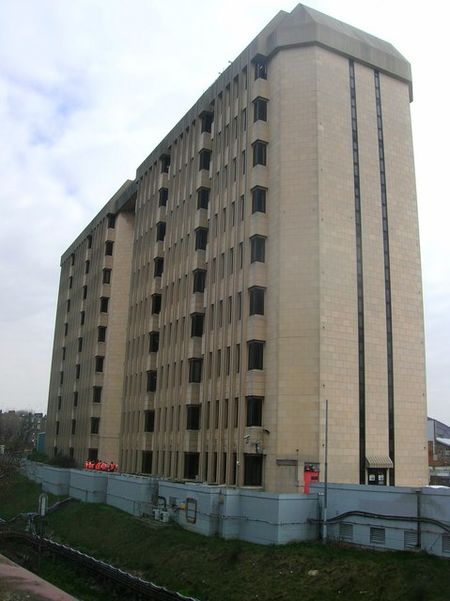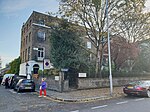Lillie Bridge Depot is a historic English traction maintenance depot on the London Underground Piccadilly and District lines, situated between West Brompton and West Kensington stations in the London Borough of Hammersmith and Fulham. It is accessed from the District line tracks between Earl's Court and West Kensington or between Earl's Court and Kensington (Olympia).
The Depot was constructed in 1871, when the Metropolitan District Railway gave notice to the Metropolitan Railway, who were running their trains for them, that they would henceforth run their own trains. Lillie Bridge Depot was built on derelict land to the west of Earl's Court, to provide stabling and maintenance facilities for the District Railway's rolling stock. In 1905, the District was extended, and a new depot at Ealing Common replaced Lillie Bridge. A year later, the Great Northern, Piccadilly and Brompton Railway, later the Piccadilly line, was opened, and the depot was reconfigured to provide stabling and maintenance for their trains. Parts of it were used as a permanent way depot, until 1932, when extensions to the Piccadilly line created a new depot at Northfields, and the site was purely used by engineering departments. It was reconfigured at this time, and again in 1962 and 1987. It housed a flash butt welding plant for producing long welded rails between 1937 and the completion of the Victoria line, when this facility was transferred to Ruislip depot. Subsequently, it was used for maintenance of London Underground's fleet of battery locomotives.
Although the District Railway ceased to use steam locomotives for passenger workings in 1905, two were kept at Lillie Bridge for shunting duties. From the 1940s, all of London Underground's steam locomotives were maintained at the depot, after facilities at Neasden Depot were closed, and this continued until the last steam locomotives were withdrawn in 1971. A pioneering electro-diesel locomotive spent long periods at the depot from 1940, undergoing repairs, and after the demise of steam, the works shunter was an 0-6-0 diesel hydraulic machine obtained from Thomas Hill of Rotherham. Its use was restricted, due to its short wheelbase and axle loading.
The Depot is scheduled to be decommissioned by 2024 by Transport for London, as part of an Earl's Court regeneration scheme. Engineering facilities will be moved to Acton Works, and it will be replaced by stabling for twelve S7 Stock trains at a lower level, with redevelopment taking place above it. The scheme has not been universally popular, attracting criticism from the Mayor of London, the current Hammersmith and Fulham Council, local housing associations and residents.










